Terrarium making is quite the thrifty hobby.
So thankfully, the list of truly essential terrarium supplies isn’t too long (you’re not getting far without plants and a container, for example). There really is a lot you can do with basic household stuff.
That said, there are plenty of terrarium tasks that can be made much easier – and lots of end results that would work and look so much better – provided we have the right supplies at hand.
Sometimes the little things can make a world of difference.
So, in this article, I’m going to give you a shopping list of everything you need to get started and our top picks for terrarium materials that we can’t live without.
Let the terrarium supply hunt begin!

Terrarium Tribe is reader-supported. When you purchase through links on our site, we may earn an affiliate commission (at no further cost to you). 💜
The Essential Terrarium Supplies Shopping List
Glass Terrarium Container
Okay, seeing as the word “terrarium” literally translates to “earth container,” your glassware is first up on the terrarium materials list.
There are generally two routes to go down here.
First is the DIY approach, where you can upcycle any appropriately sized/shaped glass containers. Think vases, mason jars, or even fish tanks. Ideally, it’ll have a lid, but there are options to get one made if they don’t come with one (more on that later).
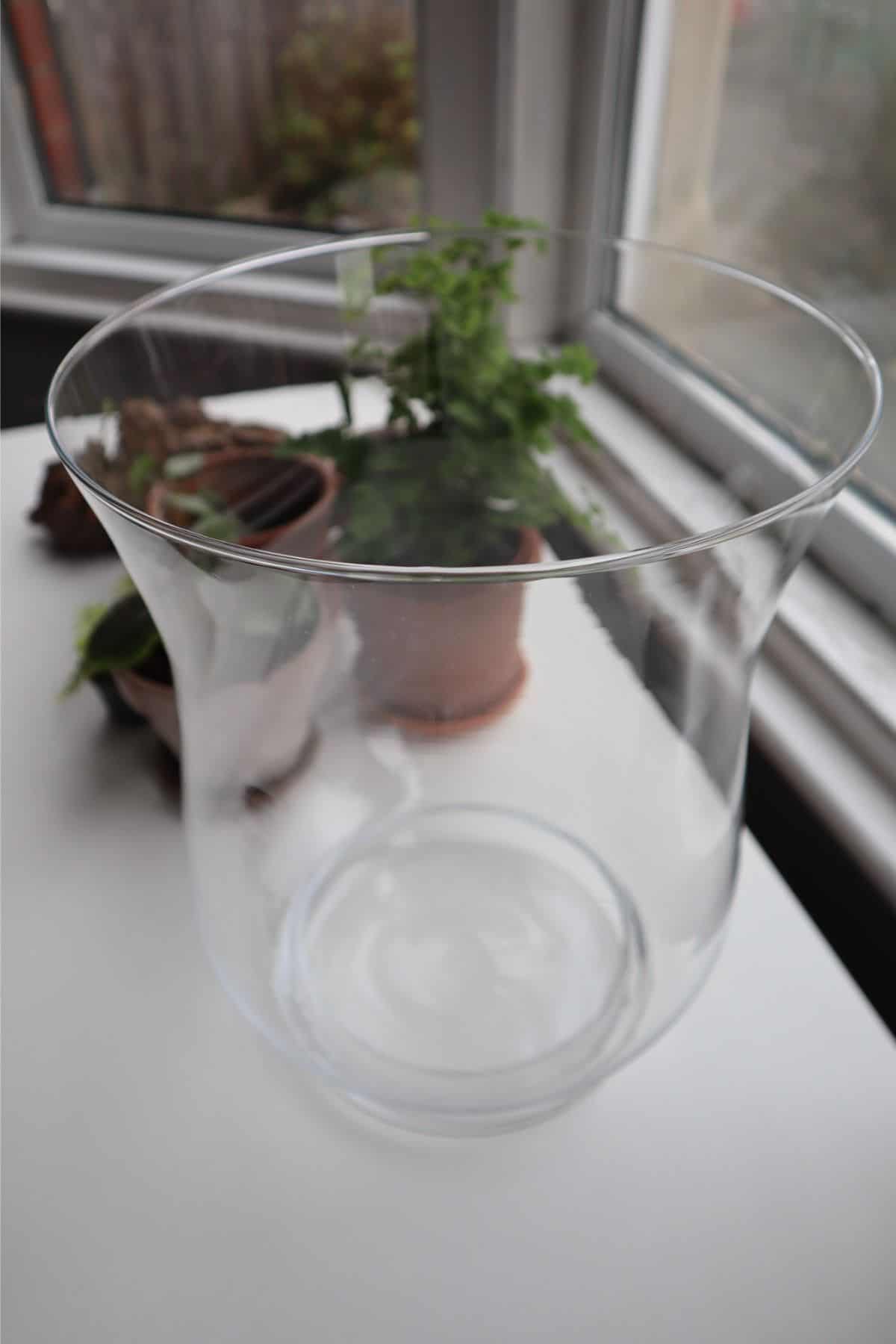
Second is the more specialized approach, where you buy a purpose-built terrarium container. Geometric glass terrariums and classic wardian cases are the most notable.
There’s generally no functional advantage to a purpose-built terrarium – it’s more about the aesthetics and better build quality – but vivarium tanks do give you more flexibility in adding artificial elements like lighting or fans.
Check out “How to Choose the Right Terrarium Container” for more help on informing your choice.
Drainage
For our first building task, a drainage layer to help with moisture control and to facilitate the water cycle.
Is it necessary? Not really, but I use one in 99% of my builds.
The most common mistake with terrariums is undoubtedly overwatering. It can be very difficult to gauge how much to add (and it’s even harder to remove once you’ve added it).
If you don’t have a drainage layer, you effectively have no wiggle room with watering, but if you do have a drainage layer, excess water has somewhere to pool away from your plants’ roots, providing some level of protection.
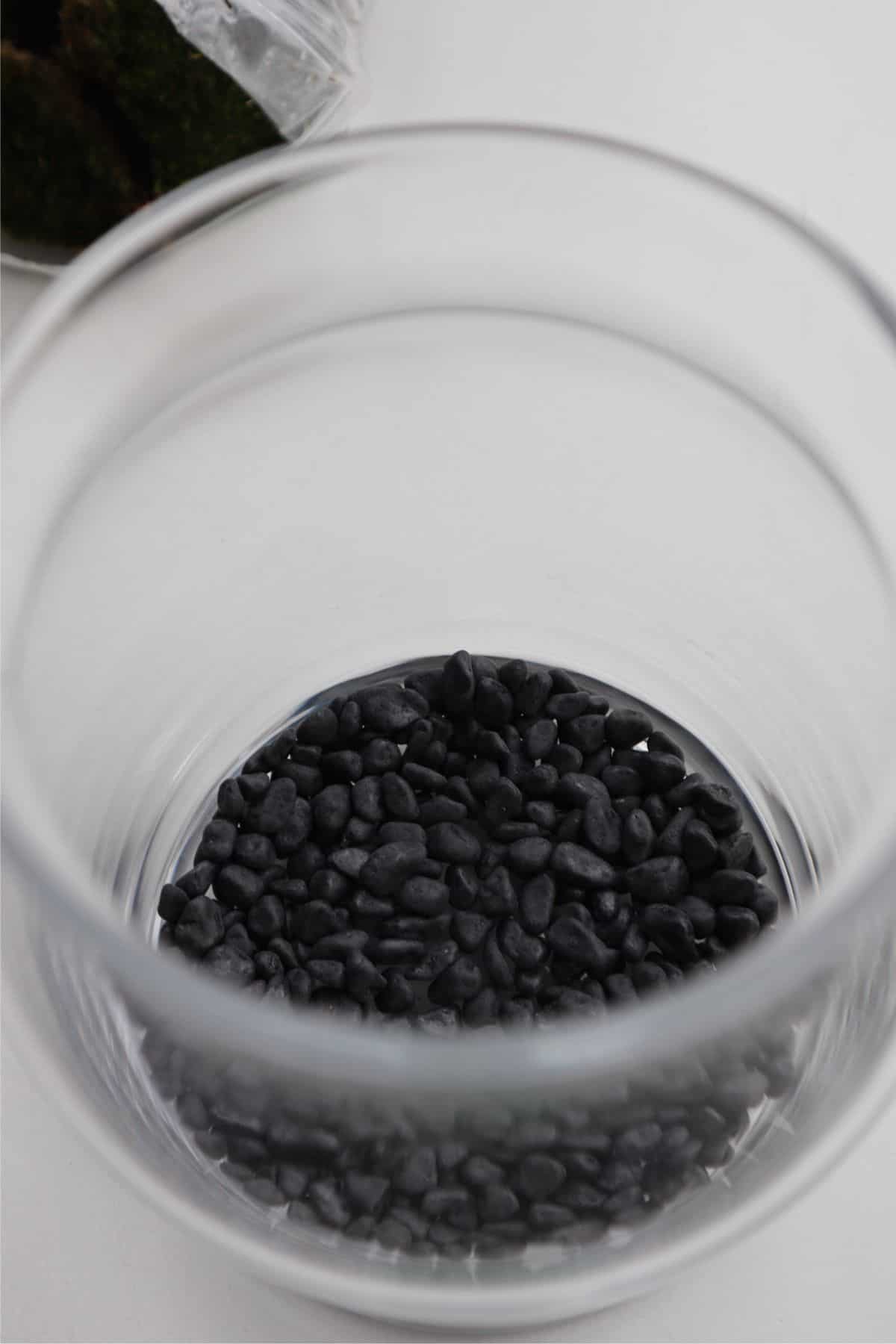
You need something large and granular that will create spaces between it when placed in a layer at the bottom of a terrarium.
Aquarium gravel, top-dressing rocks, or pebbles from your garden will do the job.
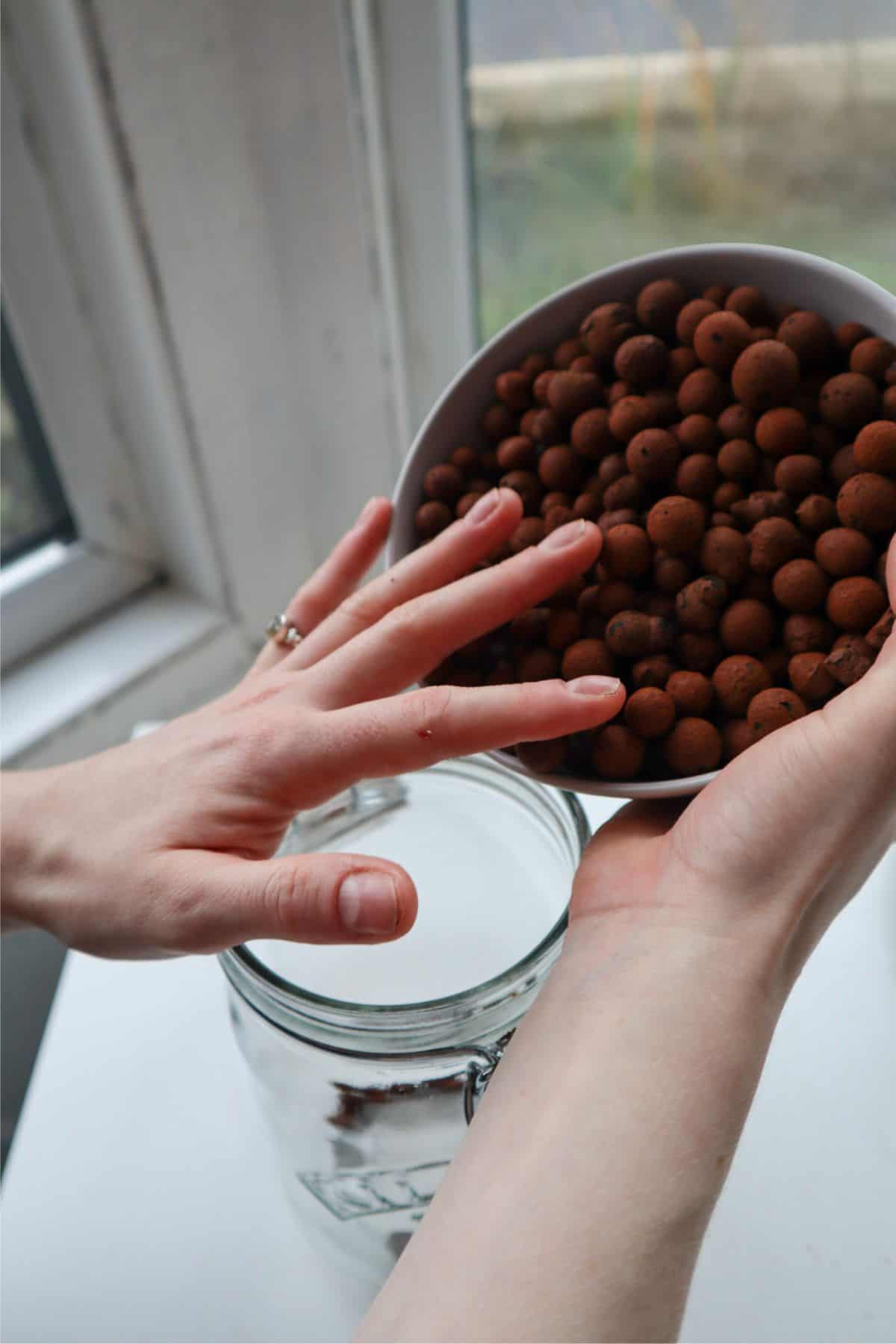
A thin fiberglass mesh is recommended on top of the drainage layer to keep it separate from the substrate and keep the terrarium systems in check.
👉 You can grab LECA and fiberglass mesh in small, terrarium-ready sizes on our shop.
Substrate/Soil
Substrate is a broad term used to describe what you’re planting in, and it’ll typically be a mix of several components designed to give you a balanced function.
Your choice of substrate will depend on the plants you choose and, to some extent, what you have available.
- If you’re building a DIY open terrarium (e.g., a succulent terrarium or cacti terrarium), you’ll likely need a gritty sand-based substrate.
- If you’re building a traditional closed terrarium, you’ll need a substrate that retains moisture and drains well. Coco coir is most often the best base, with additives like orchid bark.
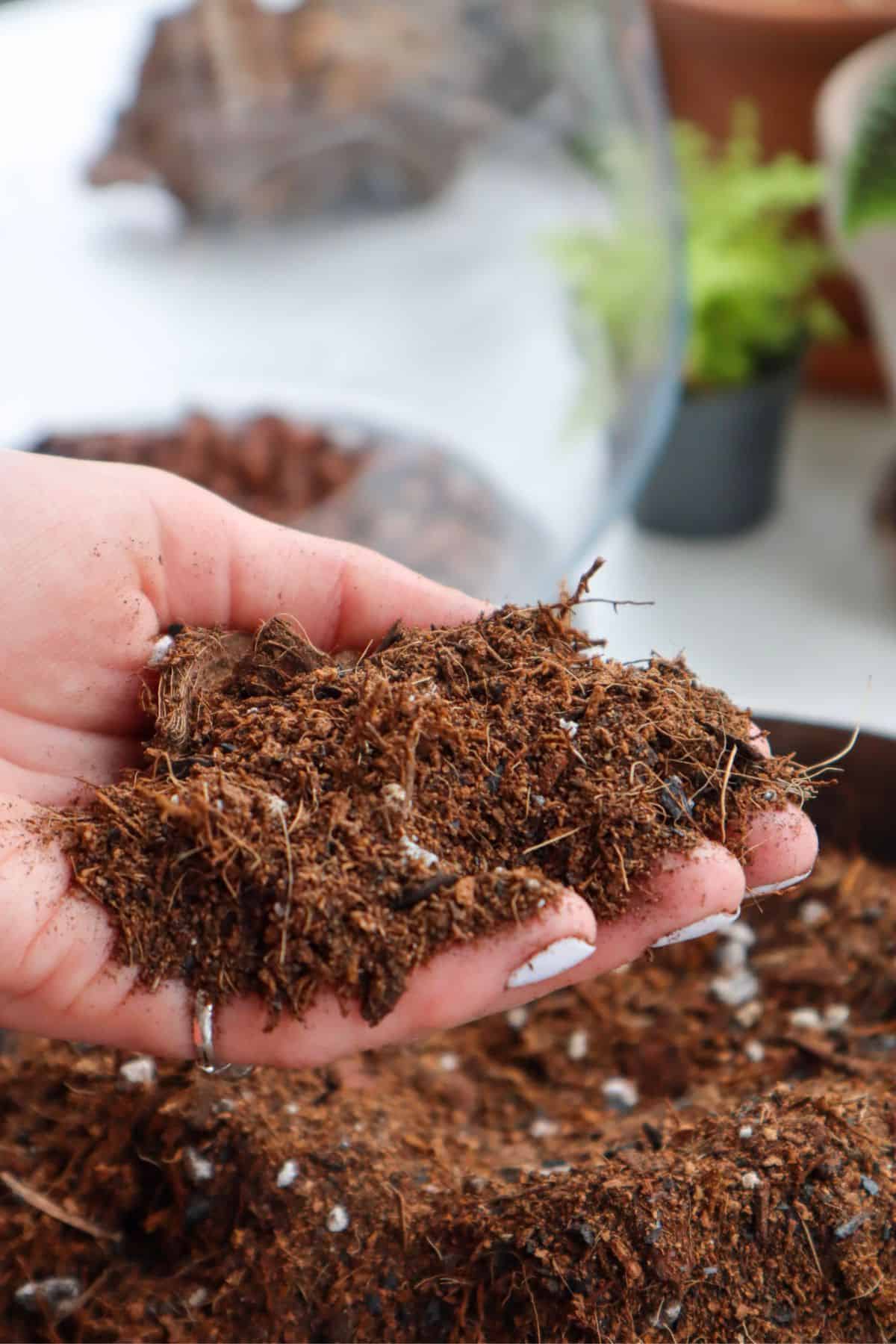
If you’re unsure of what to choose, ABG mix is a classic all-rounder which will work in almost all situations. I recommend choosing a peat-free formula, though – let’s not actively damage the environment where we can.
👉 Our premium terrarium soil (which is inspired by ABG mix) has coco coir, orchid bark, horticultural charcoal, earthworm castings, and pumice!
Whatever your plant choices, there is almost certainly a way to optimize your substrate mix for better results.
For a more in-depth analysis, check out our article on Terrarium Substrate & Soil.
It’s also worth noting that potting soil isn’t recommended for terrariums.
It often contains artificial fertilizers, is too fine, compacts too easily, and doesn’t retain moisture well without turning into a muddy cake.
Activated Charcoal
Similarly to drainage, activated charcoal isn’t essential, but there’s a reason it’s a terrarium staple.
Its filtration properties can help to increase the longevity of your terrarium – keeping your terrarium clean and fresh, reducing the risk of mold in terrariums. Though it’s worth noting, its effects are hard to quantify.

So, while not necessary, there’s no reason not to add a layer, or you can even mix some into the substrate.
👉 Read all about Charcoal in Terrariums, or grab some terrarium charcoal from our store.
Tools
Thankfully, terrariums aren’t a hobby that requires an expensive kit of tools.
Half the fun lies in getting your hands dirty, but there are tasks where your hands aren’t suited or just won’t fit in the container – then what?
- A spray bottle is somewhat necessary for establishing a healthy water cycle. It will evenly distribute water in your build and will also help you gauge how much you’re adding much more effectively. Grab one here from our store.
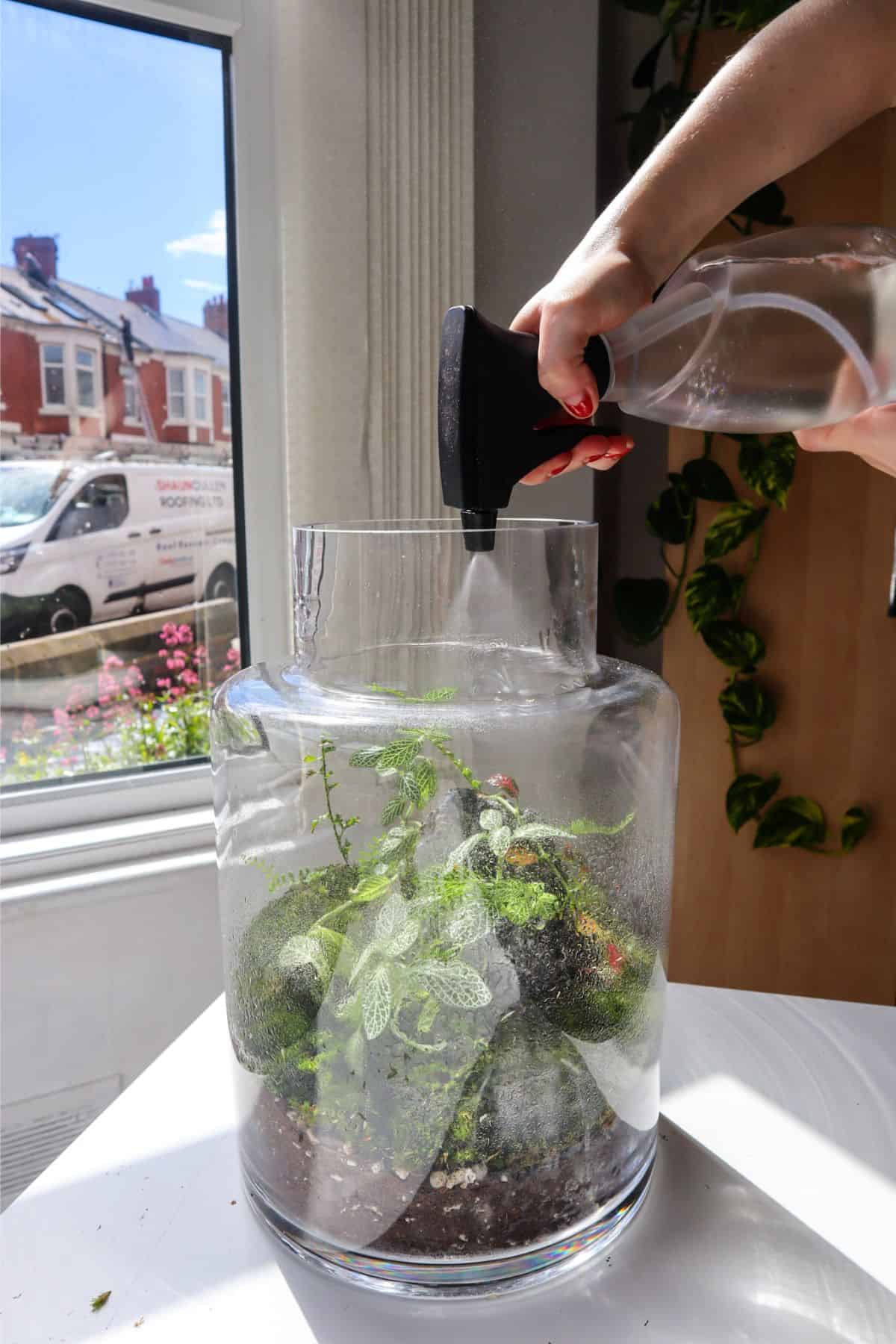
- A digging tool is useful for digging depressions and moving substrate around. For a big container with a narrow opening (such as a demijohn), you’ll need specialist telescopic tools, but most of the time, a long spoon and fork do the job nicely.
- Long aquascaping tweezers are the go-to tool in the terrarium makers’ toolkit. I use them for planting, placing moss, removing leaves, and holding plants (that I don’t want to snip) out of the way when I’m trimming others.
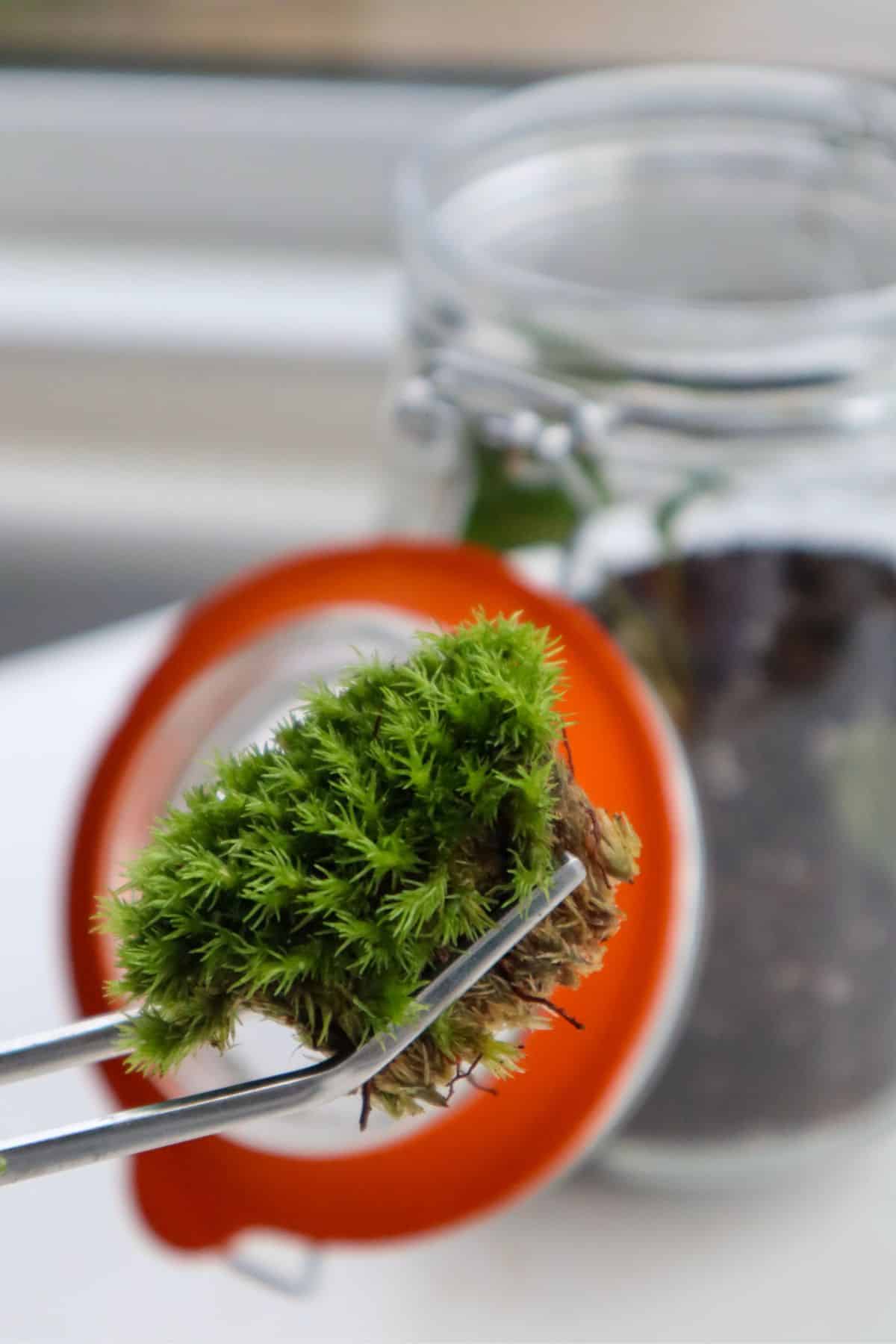
- Scissors really come in handy. For most builds, your standard household pair will do just fine, but for bigger/more complex builds you might like to grab a long, curved pair – they’re good for working around plants and hardscape.
- Lastly, a long, angled brush is the underrated member of the group. Dusting off your plants? Cleaning up your terrarium? It’s got you covered.
There are other helpful tools depending on the project but the above are the ones you’re going to want to have at hand.
👉 To see the comprehensive list of tools, see our post on Must-Have Terrarium Tools.
Lids
If you’ve found a stunning glass container that you’d like to use for a terrarium, but it doesn’t come with a lid, all hope is not lost.
I have 3 great solutions for you.
Best all-rounder: acrylic.
For most builds, a custom acrylic lid is going to be the best choice. It looks like glass and it’s easily cleaned. All you need to do is measure the dimensions of your opening, get the disk cut to size, and pop it on top of your project.
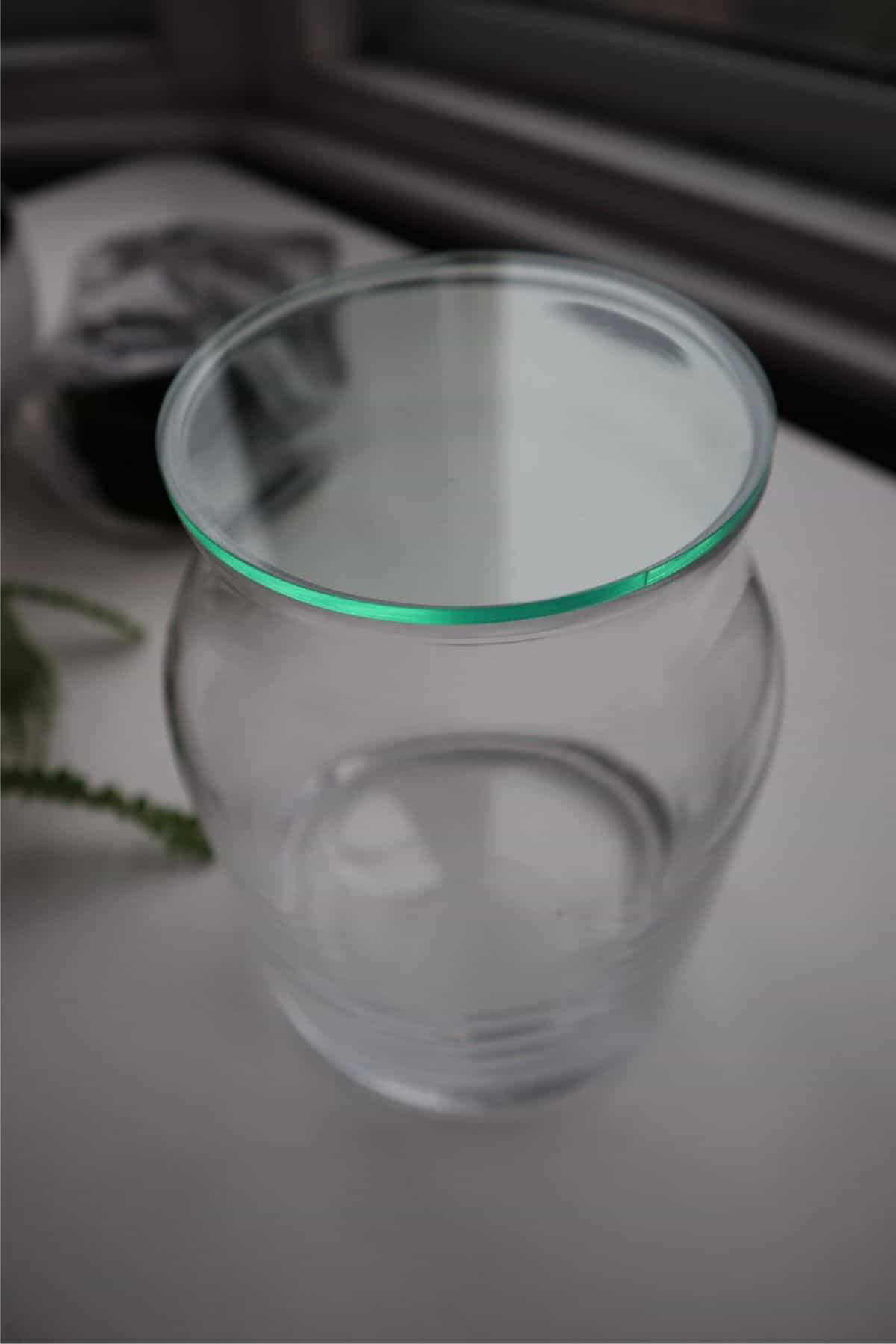
This shop on Etsy is the go-to (you can also opt to get holes drilled in if your build is going to be home to isopods and the like)
Best for bottles: cork.
For terrariums with narrow openings, a cork is usually the most effective choice. It’ll form a nice tight seal, and it’ll look like it was made for the job – which it was.
Best “for now”: saran wrap.
This is my go-to solution for new “closed” terrariums, that I haven’t ordered lids for yet. This will form an effective seal (more effective than many lids, I might add), and then you can trim the edges till they’re nice and neat.
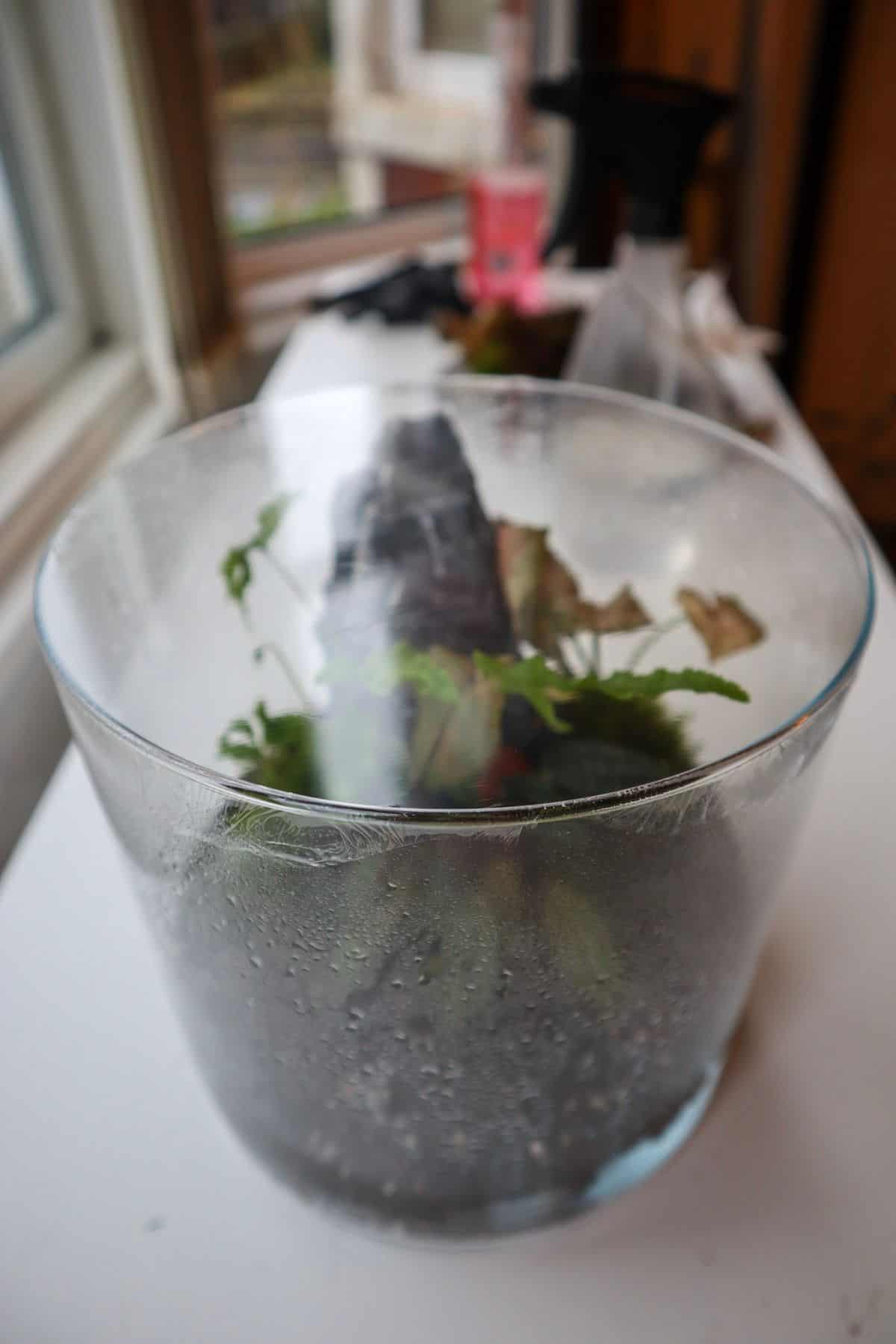
👉 Check out our Terrarium Lids Guide if you need more help sourcing or making one.
Or, if all else fails (some containers are a bit too weirdly shaped), why not take the opportunity to make an open terrarium?
Plants
Terrarium plants come in all shapes and colors, and the best species are going to depend on your setup.
Experimenting is one of the most exciting elements of terrarium building, so I’m not going to recommend any specific terrarium plants, but if you’re looking to build a tropical terrarium, you might want to consider picking from these types so that you’ve got a balanced range.
- Ferns are perfect for terrariums. They love shade, moisture, and warmth, and they add so much texture to a terrarium.
- Foliage plants draw the eye and provide a striking focal point.
- Vines add that element of natural disorder to a terrarium as they weave their around.
- Moss ties together the whole scene and makes it look a lot more natural.
👉 Shop our collection of live terrarium mosses.

- Epiphytes (plants that grow attached to things) can help to bring a more 3-dimensional aspect to your terrarium. It’s a great plant category to explore if you’re wanting to go the extra mile.
👉 Check out our Beginner’s Terrarium Plants Guide, our extensive Terrarium Plant Index, and our complete list of Closed Terrarium Plants for further guidance.
Or, if you’re building an open terrarium, then this article on Succulents for Terrariums should help you start your search.
Hardscape
Luckily, taking your terrarium to the next level has never been easier.
All you need to do to add the wow factor is to add a gorgeous piece of hardscape.
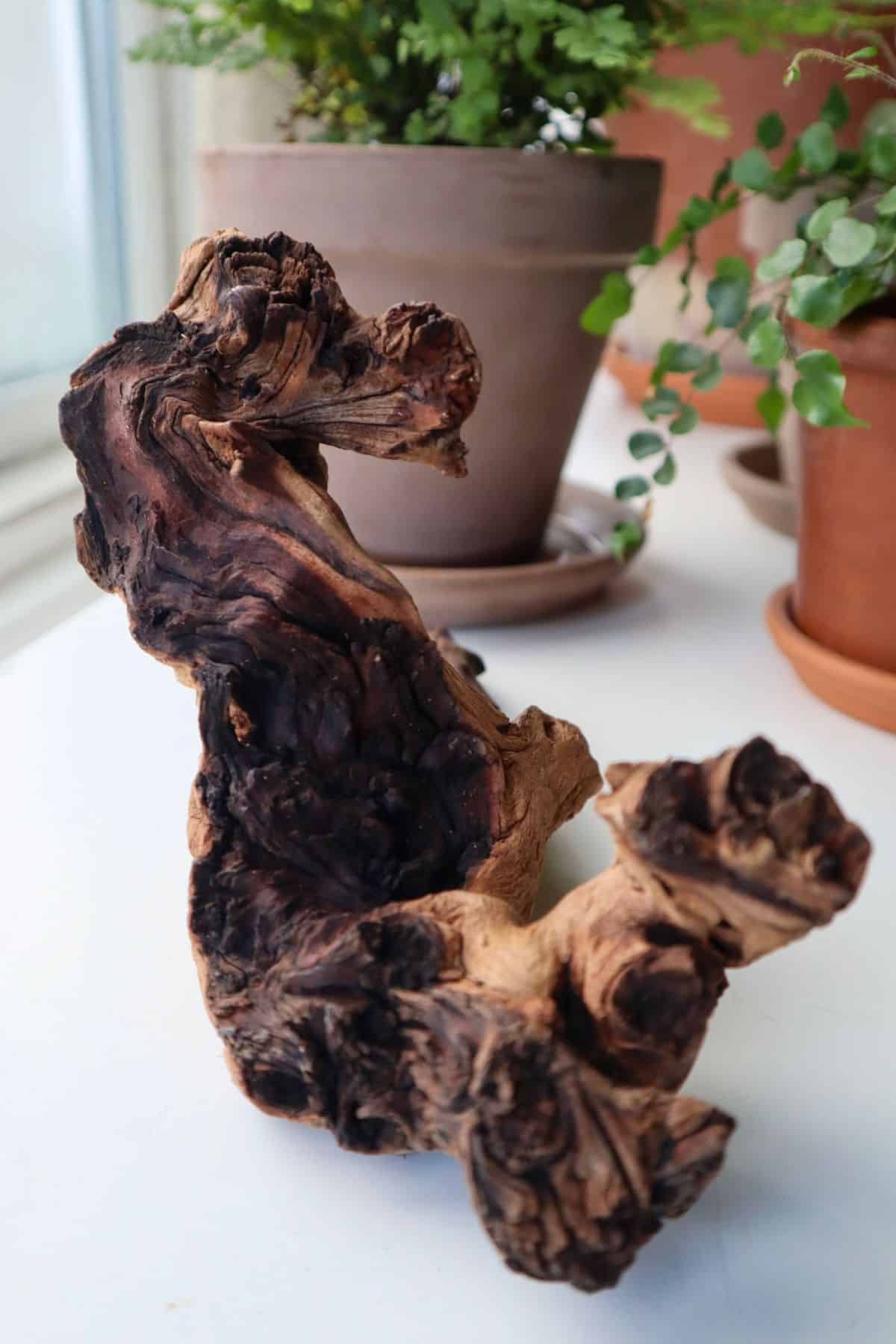
Fancy Sticking a crystal or a shell in there? Be my guest!
* This comes with a caveat, though, you don’t want to put an accessory in that will leech into the water system, so stay away from anything dyed.
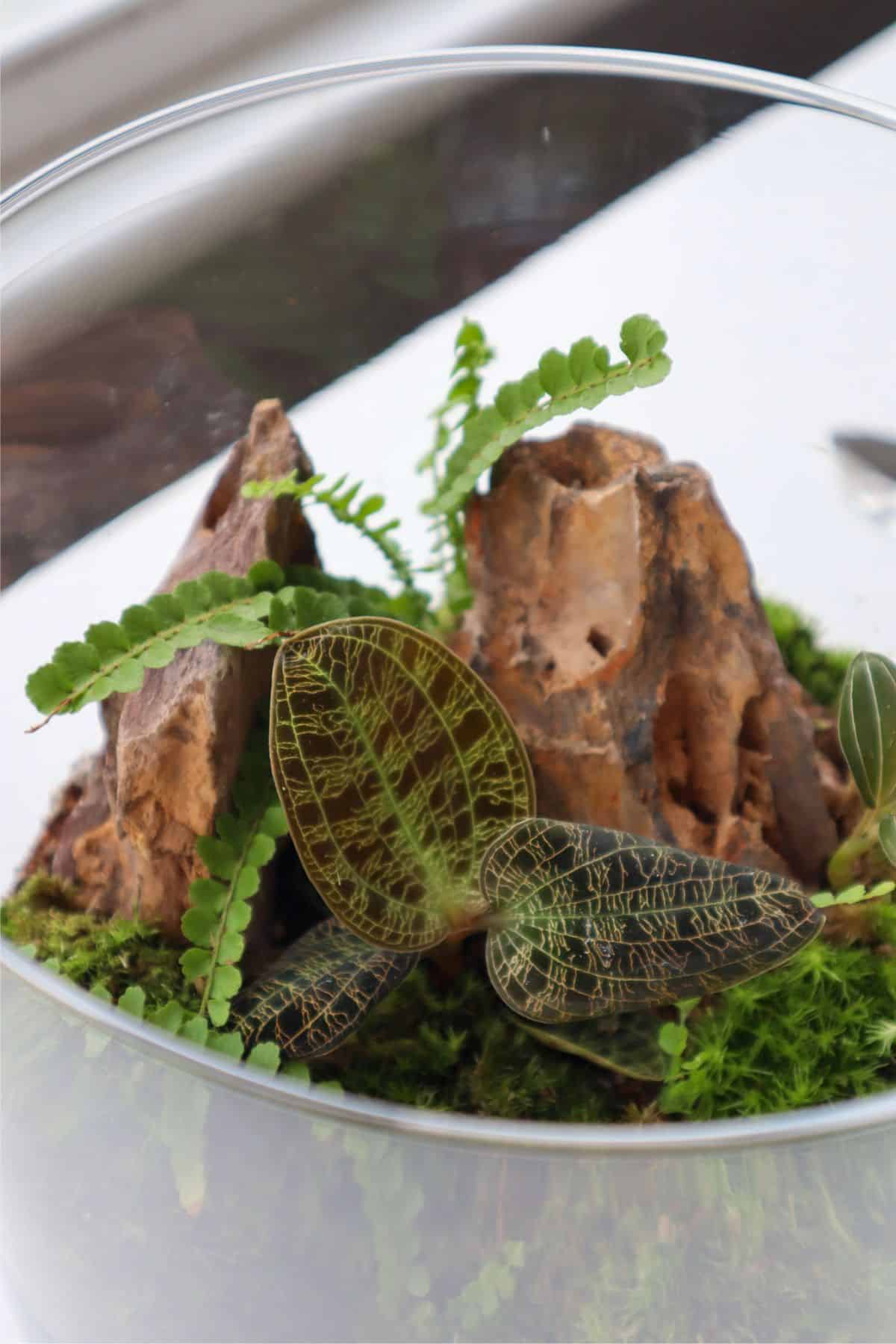
👉 For more, check out our top Terrarium Hardscape Picks post or our Terrarium Decor guide.
Or, check out all of the hardscape options with top aquascaping retailer, Buceplant.
Beneficial Insects
Microfauna is the key to making a terrarium as self-sufficient as possible. So, if you want your terrarium to go the distance, the best thing you can do is make it bioactive.
There are several different insects you can utilize for this role, but springtails and isopods are by far the most effective and common (though neither are technically insects).

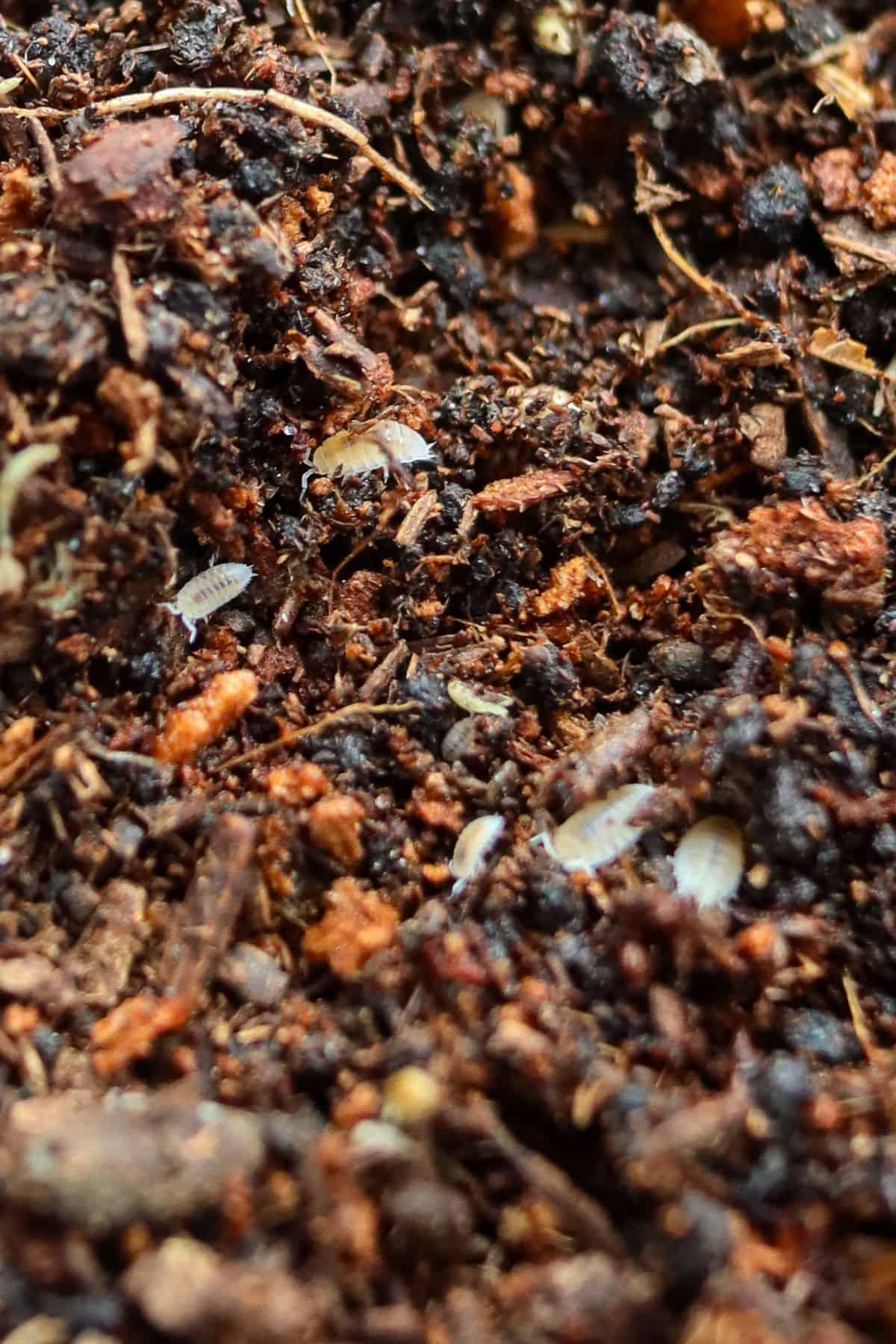
Springtails are tiny detritivorous arthropods that eat decaying organic matter, making them the best solution to combating mold in terrariums.
Super helpful for keeping your terrarium healthy and perpetuating a healthy life cycle. I recommend everyone use them where possible.
Isopods are funky little crustaceans, and though they will require a little more thought to employ (for example, you’ll need to feed them), there’s an entire world of interesting breeds, colors, and patterns to explore.
👉 We sell temperate white springtails on our store, and we have a whole range of colorful isopods for sale.
From snazzy zebra isopods to the super rare (and super cute) rubber ducky isopods.
For more on this, see our Springtails and Isopods guide and our breakdown of all the wanted (& unwanted) Terrarium Insects and Bugs.
Phew – You Made It
Okay, I’ll admit it, there are a LOT of moving parts with terrarium building, but that doesn’t mean that it’s not crazily fun and rewarding with the right guidance (because it is).
👉 For more help with sourcing, our guides on How to Make a Cheap Terrarium and How Much Does a Terrarium Cost might come in handy too.
Or, to make your life easier, you can always save yourself the bother of sourcing everything individually and buy a closed terrarium kit instead.

Some spelling mistakes I noticed;
Mold not mould
Fertilizer not fertiliser
Like your content 😃
Thanks! Those are British spellings (though my spellchecker will forever disagree with me). 😅
Thank you Dan…im starting my 1st terrarium. I chose an open terrarium. I’ll send photos. Thank you for sharing your knowledge!
DCP
Mold is the American spelling. The rest of the world uses the mould spelling.
So glad I joined the tribe! Such NEEDED info. I’m going be going to read your every word and use your suggestions! Thank You.